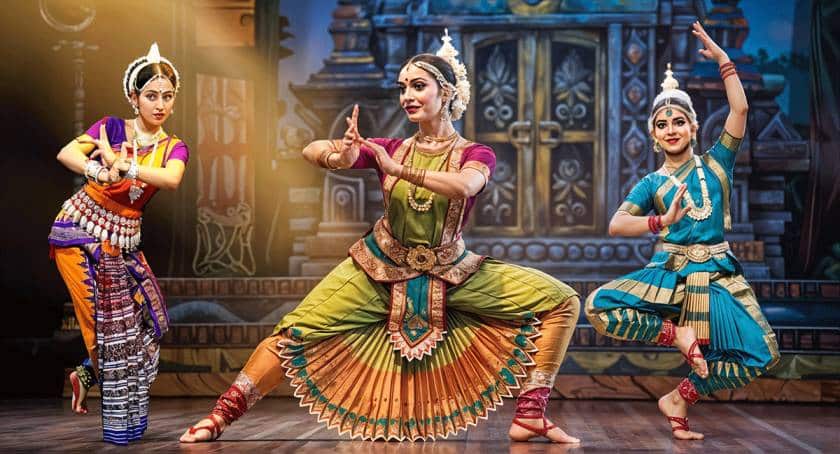Bhava (Expression) in Odissi Dance
Odissi, one of India’s eight classical dance forms, is a captivating art form that combines grace, rhythm, and expressiveness. The temples of Odisha created this dance form, historically performing it as a devotional offering to Lord Jagannath. A crucial element of Odissi dance is Bhava, which translates to expression or emotion. Bhava, along with Rasa (the aesthetic experience evoked in the audience), forms the soul of the dance, breathing life into its movements and gestures. In this blog, we examine the significance of Bhava in Odissi dance, its connection to storytelling, and how it enriches the performative experience.
Understanding Bhava in the Context of Odissi
In traditional Indian performing arts, “bhava” means expressing feelings using gestures, body language, and facial expressions. In Odissi, Bhava plays a central role in narrating mythological tales and spiritual themes. The dancer’s ability to embody different emotions transforms the performance into an immersive experience for the audience.
The Natyashastra, an ancient Sanskrit treatise on performing arts, classifies Bhava into four types:
- Sthayi Bhava – Permanent emotions (e.g., love, sorrow, heroism, peace).
- Vyabhichari Bhava – Transitory emotions (e.g., jealousy, anxiety, fatigue).
- Sattvika Bhava – Involuntary emotional expressions (e.g., tears, goosebumps, trembling).
- Vibhava – The causes that stimulate emotions (e.g., situations, characters, dialogues).
Odissi dancers skillfully use these categories of Bhava to convey the essence of their performance, making their storytelling engaging and profound. By seamlessly integrating these emotions into their performance, they ensure that the audience understands and feels the narrative portrayed.
The Role of Bhava in Odissi’s Dance
Odissi dance is deeply rooted in Abhinaya, which means “to lead the audience toward an experience.” Abhinaya consists of four key components:
- Angika (body movements)
- Vachika (spoken words)
- Aharya (costume and adornments)
- Sattvika (emotional expressions)
Angika and Sattvika Abhinaya play a key role in manifesting Bhava. The movements of the eyes, hands, and torso, combined with authentic emotional expressions, create a profoundly evocative experience.
The Gita Govinda, a devotional by Jayadeva, vividly showcases Bhava in Odissi by narrating the love between Radha and Krishna. The dancer embodies Radha’s longing, Krishna’s playfulness, and the emotions of separation and union through refined expressions. Similarly, compositions based on Ramayana, Mahabharata, and Puranic legends require the dancer to shift between various Bhavas. For instance, portraying Sita’s sorrow in exile demands delicate expressions of sadness and despair, whereas enacting Hanuman’s bravery requires bold and dynamic emotions.
Techniques of Expressing Bhava in Odissi
Odissi dancers use a combination of Mukhabhinaya (facial expressions) and Hasta Mudras (hand gestures) to communicate emotions effectively. Some key techniques include:
- Eye Movements (Drishti Bheda): The eyes play a crucial role in conveying emotions. A dancer’s gaze can shift from side to side in shyness, widen in surprise, or lower in sadness, making the feelings feel authentic. These subtle eye movements help express everything from love to anger, enhancing the depth of the performance.
- Facial Expressions (Mukha Abhinaya): Odissi dancers use their eyebrows, lips, and cheeks to express various emotions. A gentle smile indicates happiness, while furrowed brows depict anger or concern. These expressions, combined with bodily movements, help in creating a compelling narrative.
- Hand Gestures (Mudras): Every hand gesture or Hasta Mudra represents an idea or sentiment. For instance, the Pataka Mudra (palm open with fingers together) can symbolize a gentle breeze or anger, depending on its context. Similarly, the Tripataka Mudra depicts a crown, fire, or lightning. The mastery of Mudras is essential for compelling storytelling in Odissi dance.
- Body Postures and Movements: Odissi’s gentle sways, fluid torso movements, and rhythmic footwork help enhance Bhava. The combination of Chauka (square stance) and Tribhangi (three-bend posture) provides a dynamic medium for expression. These postures breathe life into the performance when combined with appropriate facial expressions.
Training and Mastery of Bhava in Odissi
Mastering Bhava in Odissi dance requires rigorous training and years of practice. Some ways in which dancers develop expressive abilities include the following:
- Mirror Practice: Observing facial expressions while practicing helps refine emotional expressions. Dancers spend hours in front of mirrors, perfecting their ability to convey subtle emotions precisely.
- Improvisation Exercises: Dancers often practice expressing different emotions spontaneously to enhance their versatility. Improvisation helps develop a natural and spontaneous expression of feelings, making performances more authentic.
- Theatrical Training: Exposure to theater and acting techniques helps dancers cultivate realistic expressions. Since Odissi dance is highly narrative, understanding dramatic techniques enhances the dancer’s ability to tell a story effectively.
- Spiritual and Emotional Connection: Since many Odissi performances are devotional, understanding the philosophy and emotions behind the stories enhances the depth of expression. Dancers often immerse themselves in spiritual and literary texts to connect deeply with their characters and themes.
Final Thoughts
Bhava is the heart and soul of Odissi dance. Even the most complex footwork and graceful movements may fail to resonate with the audience without expressive depth. A skilled Odissi dancer breathes life into narratives through Bhava, bridging the past and present, tradition and modernity, performer and spectator. Whether depicting the divine love of Radha and Krishna or the valiant struggles of mythological heroes, Bhava ensures that the dance form remains a powerful medium of storytelling and devotion.
As Odissi continues to captivate audiences worldwide, mastering Bhava remains essential for every dancer. Bhava transforms mere movements into a profoundly moving and spiritual experience. Due to its emotional impact, Odissi is more than just a dance; it is an art form that touches the hearts of everyone who sees it, transcending time and cultural boundaries.


